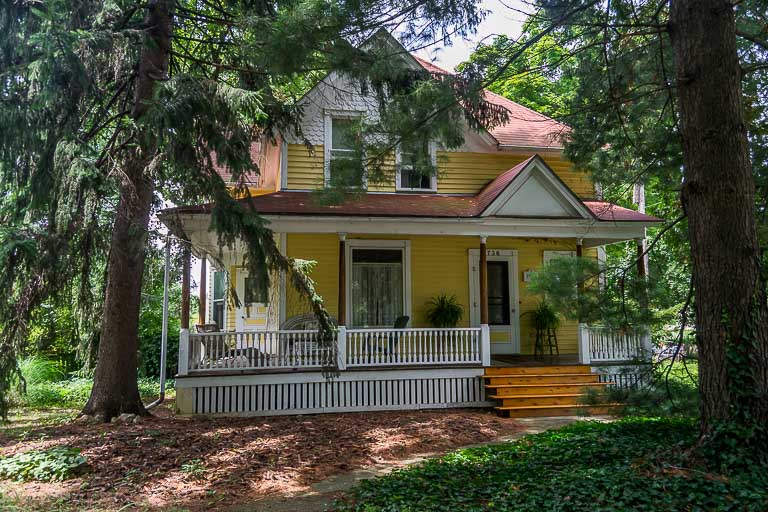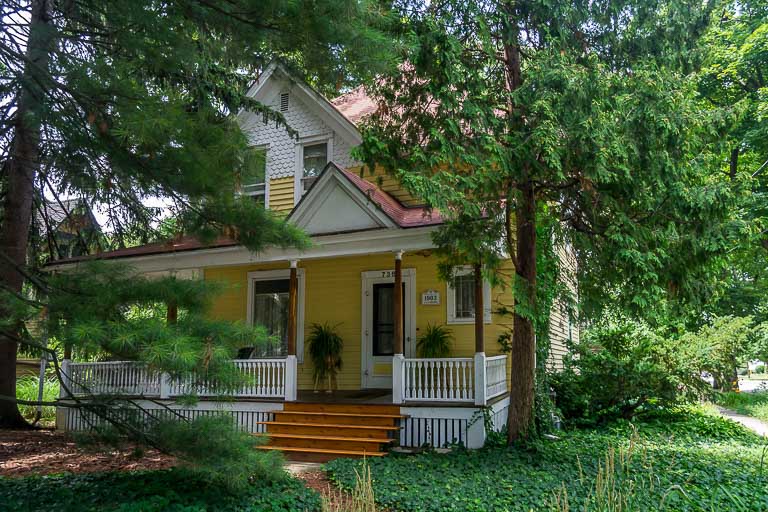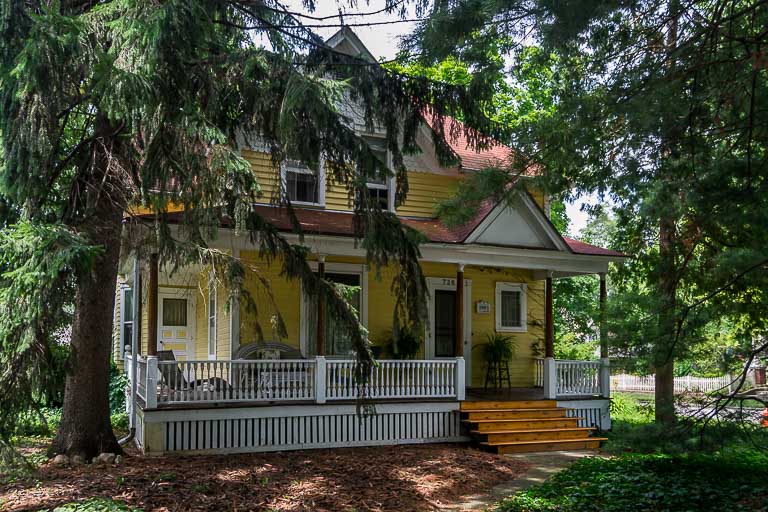736 DOUGLAS AVENUE
HISTORIC SIGNIFICANCE
In the early days of Elgin's development, Douglas Avenue and Spring Street became home to many of the upper class business and civic leaders. Given these two street's proximity to the heart of downtown while simultaneously far enough away from the burgeoning city center to provide a sense of calm, the area became known to many as the "Gold Coast." In 1900, Adelaide Helden and her husband John purchased the lot of land that later became home to 736 Douglas. John Helden was a longtime resident of Elgin and had operated a store specializing in fine boots and shoes just across the Fox River on West Chicago Street. Helden paid $1400 for the land and built upon it, selling it to Andrew and Edna Fredricks in 1905.
Andrew Fredricks was a native of Sweden where he worked for the DeLaval Cream Separator Company. He came to Elgin in 1893 where he continued his association with the DeLaval Company. Edna Fredricks was a member of the Women's Christian Temperance Union. Together they had children before her death in 1916. Andrew lived alone at 736 until his passing in 1944.
ARCHITECTURAL SIGNIFICANCE
This Queen Anne structure is considered a contributing property to the historic significance within the Spring-Douglas Historic District. The Queen Anne style with its Victorian details was at the height of its popularity in the latter part of the 19th century and beginnings of the 20th. This free classic sub-type showcases many of the main character defining features of the Queen Anne style including its steeply pitched roof, asymmetrical layout, scallop shingles in the roof peaks and a three-side bay with a front porch showcasing some spindle-work detailing.
TIMELINE OF PREVIOUS OWNERS
Sources: 2004 Heritage Plaque Application; Audio: TextAloud



